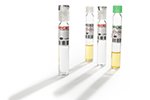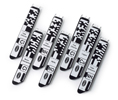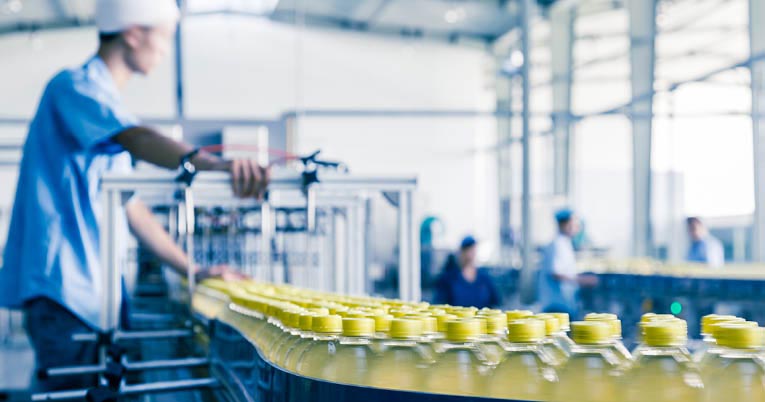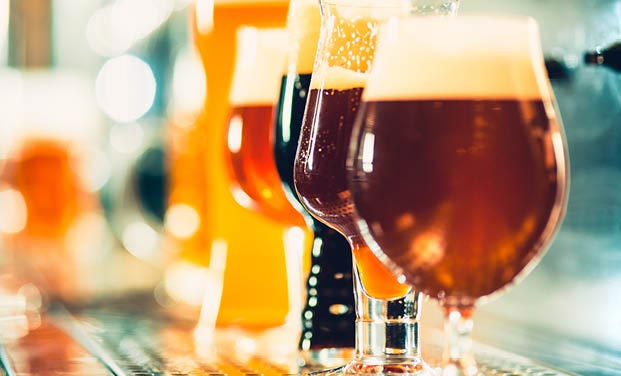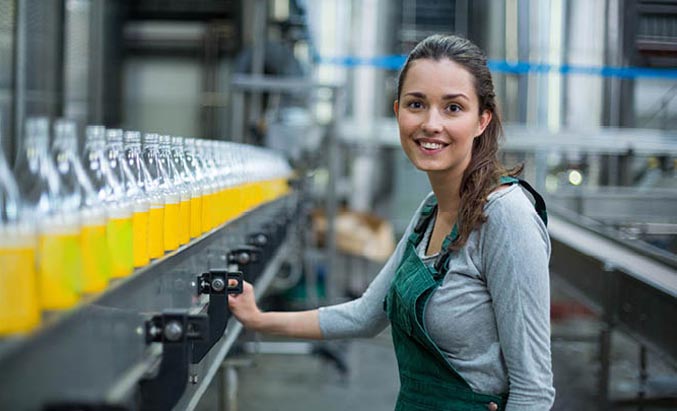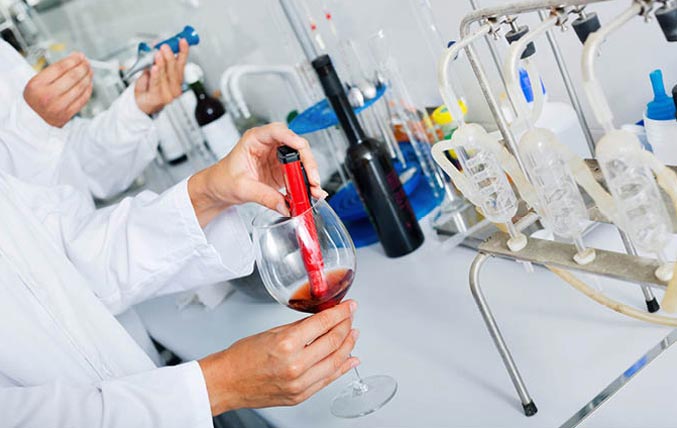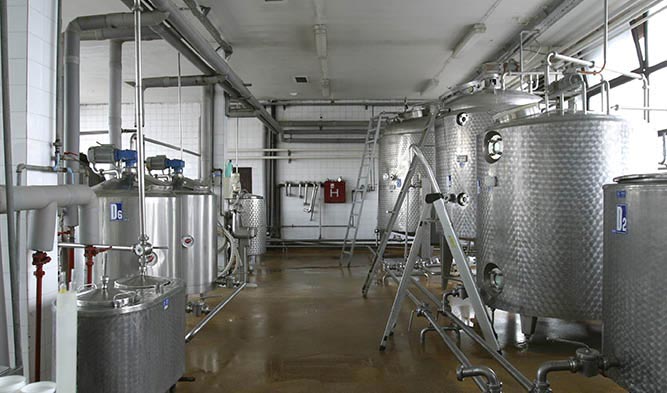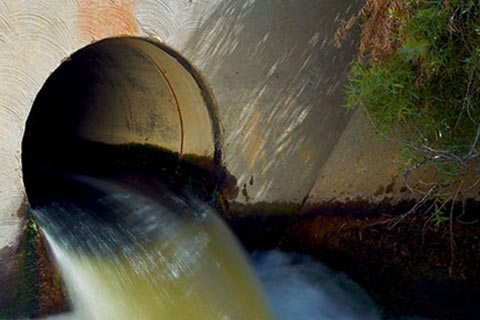Beverage Analysis, Testing, and Measurement Solutions
Hach ® designs, manufactures, and distributes world-class instrumentation, test kits, and reagents for testing water and product quality in a variety of beverage industry applications. Our products can be used within influent, in-line and at-line, as well as clean-in-place (CIP), and effluent water treatment. From beer to soft drinks to bottled water and wine, Hach can help you meet the beverage quality control demands at your facility.
The right analytics solution can help you ensure that products comply to specifications and meet shelf life requirements. Production process optimization, water conservation, environmental profile improvements, and regulatory compliance all are benefits of analytics.
Measuring at the right time and with the best accuracy goes far in improving beverage outcomes, and our controllers, sensors, and analyzers are designed to help you optimize your process from start to finish.
Brewing: As a brewer, quality, flavor stability, and shelf life are critical to brand and business. For continuous and reliable quality control in the production process, at line or in the lab, from incoming water through to final package, Hach has the beverage measurement and testing solutions you need.
Wine: Hach allows vintners to ensure product quality, while protecting flavor stability and shelf life. From SO₂ and dissolved oxygen to total package oxygen, you can find a variety of wine analysis tools at Hach.
Bottled Water: Accurate bottled water analysis and testing is made simpler with solutions for carbon dioxide and ozone measurements. From carbonated to still water, our wide range of quality control solutions ensures your bottled water continues to meet high standards.
Soft Drinks: Hach works with beverage manufacturers to provide a number of quality control tests that measure oxygen and carbonation levels in soft drinks. We strive to ensure that you produce the best product quality time and time again, both at line and in the lab.
Dissolved Gases/Oxygen
Neglect of proper oxygen levels can cause noticeable changes in taste and clarity of the final product. When poorly controlled, a beverage’s taste, color, and shelf life can be substantially affected.
Care must be taken throughout the process to minimize oxygen pickup from the air. The last, and perhaps the most critical step, is the elimination of oxygen in the packaging operation.
Parameters Relevant to Dissolved Gases/Oxygen Processes:
- Carbon Dioxide: As an additive, pressurizing agent, aerating agent, or preservative
- Nitrogen: As an aerating or pressurizing agent, or preservative
- Oxygen: As an oxidizing agent
- Ozone: As a cleansing agent
Incoming/Raw Water
Incoming water quality directly impacts product quality. The consistency and purity of your influent or raw water greatly affects the taste and quality of your final product.
Proper treatment and conditioning is essential for water as it enters any production process. The water used in production lines of food facilities must not only meet FDA drinking water regulations, it must be treated to remove additional minerals and chemicals which could impact taste and production processes.
Optimizing boiler feed water and cooling tower feed minimizes chemical usage, prevents corrosion, and protects plant equipment.
Parameters Relevant to Influent/Raw Water Processes:
- Chlorine
- Conductivity/Total Dissolved Solids (TDS)
- pH/ORP
- Turbidity
- Dissolved Oxygen Carbon (DOC)/ Total Organic Carbon (TOC)
- Coagulation Control
- Alkalinity
Production Control
Beverage companies are eager to identify issues with production processes and product quality before customers do, and at Hach, we know you are no exception.
Make a positive start by determining and monitoring critical control points in beverage production, while building confidence in flavor stability and shelf life.
Parameters Relevant to Production Control Processes:
Quality Control Lab
Having the right lab instrumentation can greatly increase confidence in your beverage product’s overall quality.
Maintain quality standards while also preserving cost efficiencies. Well-designed lab tools that trace, measure, and report product quality are key to comprehensive analytical checks. Equip your lab with the right tools for the best possible beverage outcomes.
Relevant Parameters in Quality Control Lab Applications:
- Total Acidity
- Sodium
- Color
- Calcium
- Chloride
- Turbidity
- pH
Clean-In-Place (CIP)
CIP is commonly used in hygiene critical industries to clean a wide range of areas in the plant. CIP refers to the use of a mix of chemicals, heat, and water to clean machinery, vessels, or pipe work without dismantling plant items.
CIP ensures the cleanliness of production surfaces. Beverage manufacturers design and qualify CIP procedures to ensure no microbial growth will contaminate products.
Parameters Relevant to CIP Applications:
- Inductive Conductivity
- Chlorine
- pH
- Total Suspended Solids (TSS)
- pH
- Plus many more...
Wastewater
As one of the most resource intensive processes in your plant, we understand that minimizing environmental impact and ensuring compliance are key.
From nutrient removal to sludge treatment to sampling, proper monitoring and treatment of your wastewater ensures energy and chemical savings and compliance.
Parameters Relevant to Wastewater Applications:
- Chemical Oxygen Demand (COD)
- Biochemical Oxygen Demand (BOD)
- pH
- Dissolved Oxygen (DO)
- Turbidity and Total Suspended Solids (TSS)
- (Total) Nitrogen
- (Total) Phosphorus
- Total Organic Carbon (TOC)
- Organics
- Sampling




